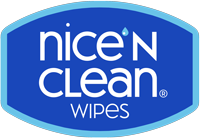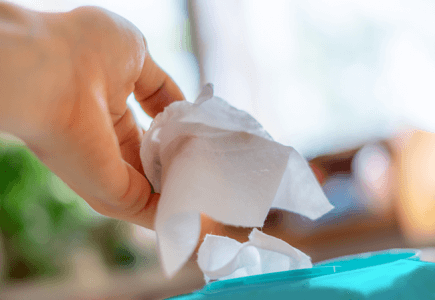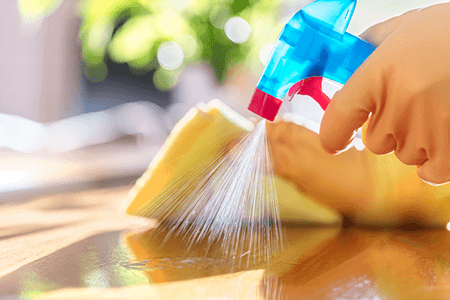The Top 10 Germiest Spots at Home

Things that make you go, “EEEEwwwww!” They’re everywhere, they’re multiplying, and they’re invisible to the naked eye—they’re germs, and even as you’re reading this, they’re crawling all over your device. Do you know where the germiest spots are in your home?
Take a look at our top 10 list of areas germs love to lurk. You may be surprised by some of them. We’ll also share tips to clean and disinfect the worst areas so you can help your family stay healthy.
#10. Car dashboard
When air gets sucked in through the vents, it’s often drawn to the dashboard, where it can deposit spores and germs. And don’t get us started on food spills! Because the dashboard receives the most sun and tends to stay warm, it’s a prime area for growth.
Cleaning Tip: Regularly wipe down the inside of your car with disinfecting cleaning wipes, especially during allergy season.
LEARN THE DIFFERENCE: CLEANING VS. SANITIZING VS. DISINFECTING
#9. Welcome mat
It’s there to greet your guests, but it’s also a haven for all the creepy-crawlies hitching a ride on the bottom of their shoes. The area near your front door is one of the dirtiest in the house. According to a study in the medical journal Anaerobe, bacterium-causing diarrhea, fever, and stomach pain was found more often on the bottoms of the participants’ shoes than their toilet seats. Once they make themselves at home on your mat, any time you walk on it, you give them a free ride into your home.
Cleaning Tip: Take off your shoes as soon as you enter your home. Avoid resting bags and groceries on the mat, which can transfer germs into the house. Also, spraying the doormat once a week with a fabric-safe disinfectant can help stop the spread of germs.
#8. Vacuum cleaner
According to microbiology and environmental science professor Charles Gerba, PhD, “Vacuums—including the brushes and bags—are like meals-on-wheels for bacteria. You suck in all this bacteria and food, creating an atmosphere for growth.”
Cleaning Tip: Always clean your vacuum outdoors, especially when emptying out the dirt receptacle. Empty the dirt receptacle after each use. Clean the cavity of a bagless vacuum with diluted bleach and let it air-dry, then use a disinfecting wipe on the handle, body, and any attachments to clean and disinfect them before putting your vacuum away.
#7. Cell phone
A 2017 study published in the journal Germs looked at 27 teenagers’ mobile phones and found “bacterial contamination” on all of them. And the leather and vinyl cases we use to protect our devices provide plenty of crevices for germs to hide.
Cleaning Tip: Be aware of where you set down your phone, especially when you’re away from home. Make sure you turn your phone off before cleaning it with a disinfecting wipe that’s safe for electronics. Don’t forget to wipe down your phone case, too.
#6. Computer keyboard
Your keyboard is being showered with germs on two fronts: your hands and your snacks. According to a 2018 study in the International Journal of Environmental Research and Public Health, “In general, the bacteria that live on our skin, fingernails, hands, and anywhere the hands have been are likely to transfer new bacteria over to the keyboard... Eating above computer keyboards is also one of the causes of bacterial contamination.”
Cleaning Tip: Use an air can to blow out dirt and crumbs from between the keys, then follow up with a cleaning and disinfecting wet wipe. We recommend doing this at least daily. Washing your hands before sitting down to work will help as well.
#5. Garbage disposal
Studies show that there are often more than 500,000 bacteria in the kitchen sink—about 1,000 times more than the average toilet has. And while the metal part of the garbage disposal produces ions that can help kill germs, they still love to grow on the crevices in and around the slimy rubber stopper.
Cleaning Tip: Clean your disposal’s rubber stopper with a diluted bleach solution at least once a week.
ALSO READ: TIPS FOR CLEANING YOUR ENTIRE HOUSE WITH WET WIPES
#4. Wet laundry
“Anytime you transfer underwear from the washer to the dryer, you’re going to get E. coli on your hands,” Professor Gerba says. “Just one soiled undergarment can spread bacteria to the whole load and the machine.”
Cleaning Tip: Run your washer and dryer at 150°F and wash underwear separately. Transfer wet laundry to the dryer quickly so germs don’t multiply, and dry for at least 45 minutes. Wash your hands after doing laundry, and run a cycle of bleach and water between loads to eliminate any lingering bugs.
#3. Wallets, handbags, purses, and backpacks
If it goes where you go, that means it’s exposed to germs just like you are. When Professor Gerba and his team tested women’s purses, they found that most had tens of thousands of bacteria on the bottom—and a few were overrun with millions. Fun fact: Makeup cases are just as bad, as are wallets and backpacks.
Cleaning Tip: Instead of leaving your bag on the floor, hang it on a hook whenever you can—especially in public bathrooms. When you’re at home, hang it on a hook or place it on the floor near your door. Never put it on your kitchen counter. Stick with leather or vinyl, which are less porous surfaces and more impervious to germs. Clean and disinfect your bag every few days. If your bag is made of nonporous material, you can use a disinfecting wipe like Nice 'N CLEAN® Disinfecting Wipes, then let it air dry.
#2. Bath towels
Bet you thought it would be your toilet, right? Nope. “You’ll get more E. coli in your face when you dry your face with a towel at home than if you stuck your head in a toilet and flushed,” says Professor Gerba. “E. coli grows quite well on towels. Within about three or four days, you’ll get fecal bacteria in the towel easily because it’s wet and moist.”
Cleaning Tip: Change your towels every three or four days to avoid cross-contaminating other people in your house, and use an antibacterial laundry detergent if possible. “You’ve got to use hot water wash and dry towels really well,” Professor Gerba advises.
#1. Kitchen sponge
That sponge you use to clean the kitchen counter? Crawling with bacteria, as are the sink’s basin and faucet handles. A 2017 study found 362 different species of bacteria living in used kitchen sponges; 82 billion bacteria were living in just one cubic inch of space.
Cleaning Tip: Bad news—microwaving didn’t help. Nor did boiling the sponge or putting it in the dishwasher. The bacteria just grew right back. The study’s solution? Replace kitchen sponges at least once a week. When cleaning your kitchen counters, don’t wipe with a sponge, which simply spreads bacteria. Instead, use disposable disinfecting wipes, like Nice 'N CLEAN® Disinfecting Wipes. To disinfect properly, make sure the counter stays wet for 3 minutes and air dries completely.
ALSO READ: DISINFECTING WIPES: EVERYTHING YOU NEED TO KNOW




